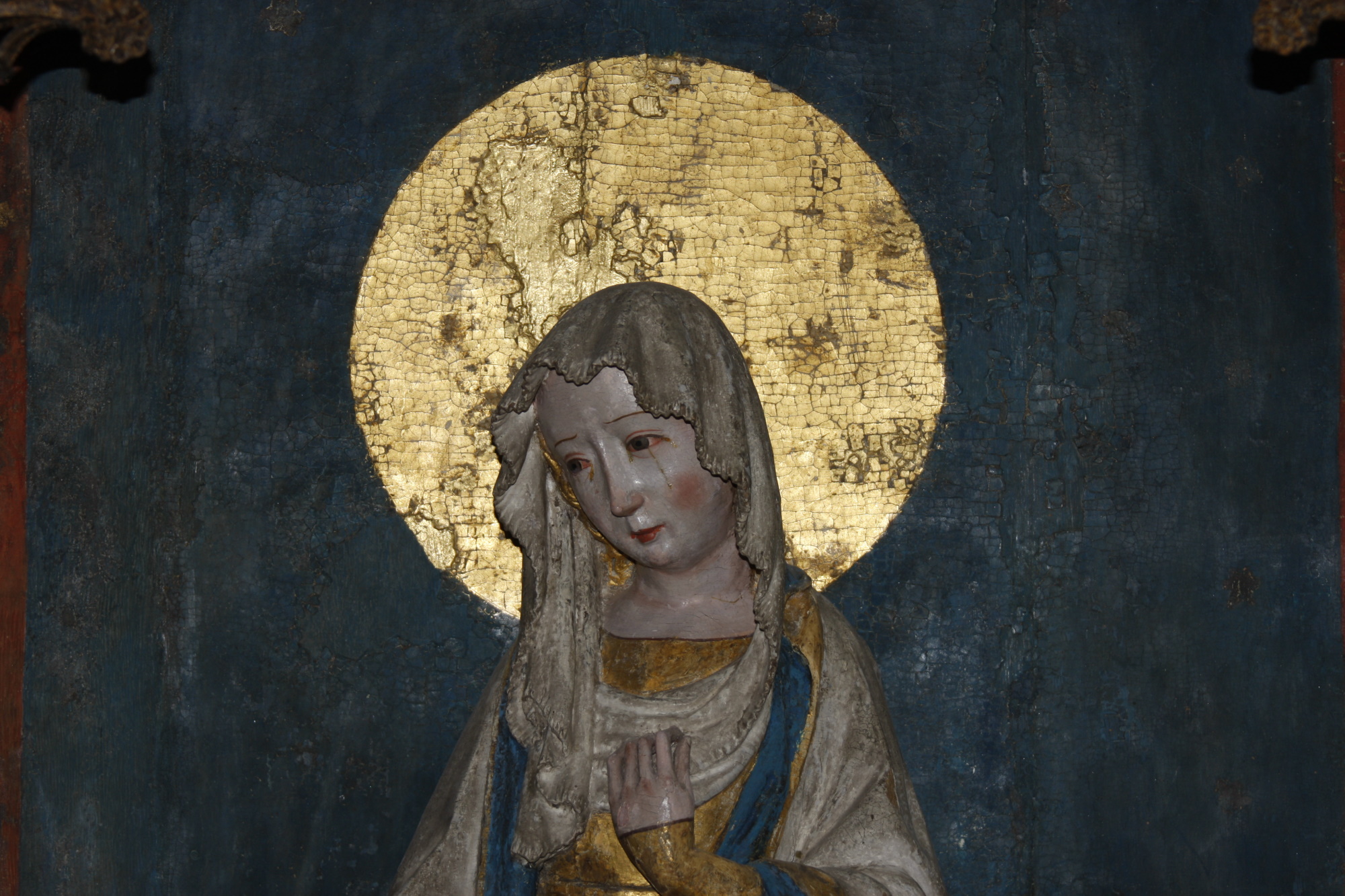Originally no artistic decoration was allowed in the abbeys, according to the Cistercian order. It was considered that works of art, colourings, and precious materials would act disturbing upon the spiritual concentration of God’s poor and humble servants. For a long time, the only permitted imageries were pictures of Christ on the cross. But the strict view of art was eventually eased, especially in the convents, and the church of Askeby abbey came to have a relatively rich artistic decoration.
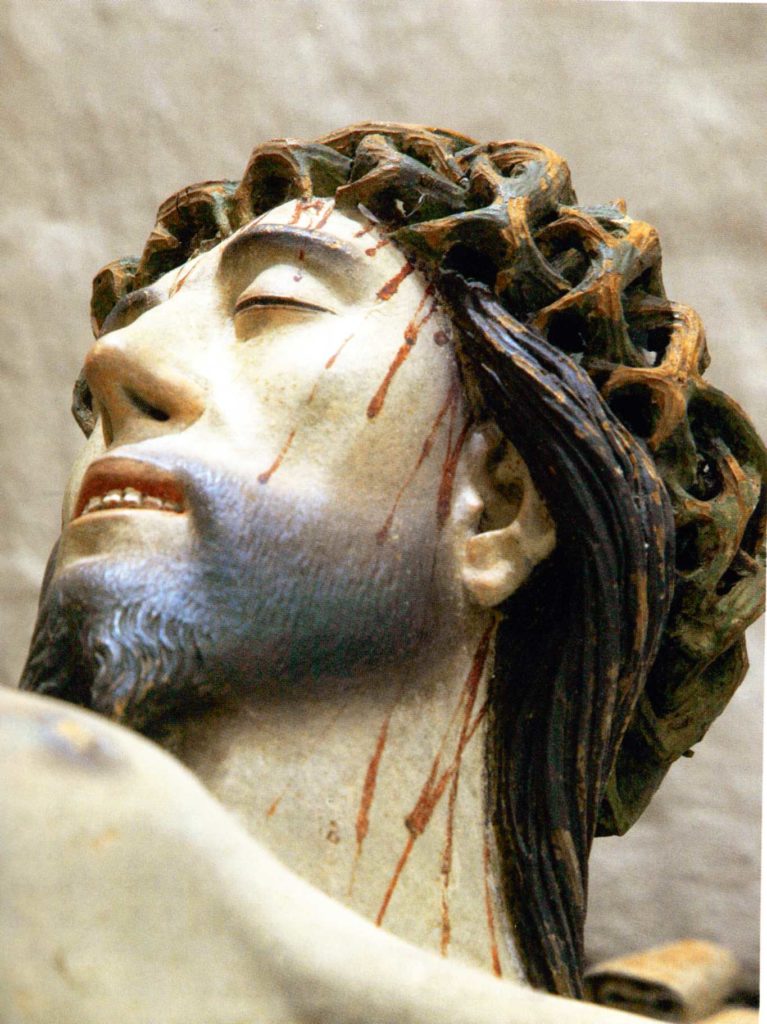
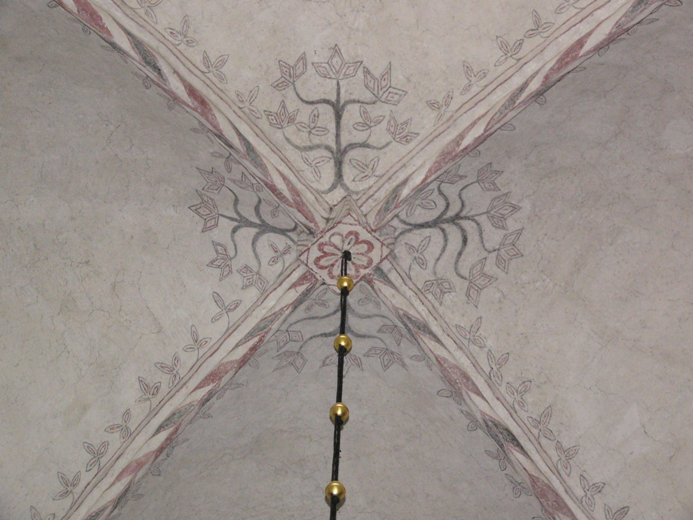
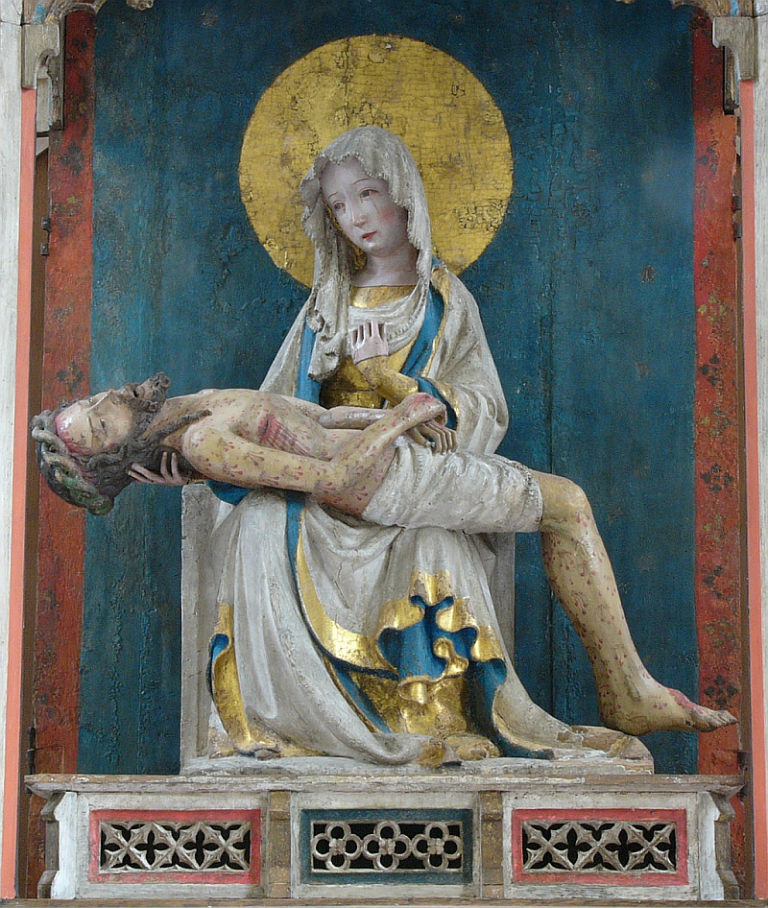
Several Churches under the same Roof
The church building provided for the need of an individual church for the convent, the congregation, and the king’s courtyard. The building accommodated in other words at least three churches, perhaps four, if you counted the special section for sisters. The different church rooms were separated by some kind of barrier. At the re-opening of the abbey in 1444, both the convent church and the congregational church were newly decorated with mural paintings, and exclusive inventories were probably donated at the time of re-opening. Most of these objects still remain.
Medieval Decoration of the Abbey Church
The abbey church’s inventories also included a triumph crucifix and a Pietà, something that still remains. The altar border is however placed in the Swedish History Museum, see Textiles link below. The unique patron saints of the church were Virgin Mary and Saint Olof. Sculptures of them were probably placed on the side altars on both sides of the triumph crucifix, but no such sculptures are preserved today. In order to visualize and try to give a picture of how Askeby abbey may have appeared, two substitutes from two other churches within the region have taken their places. It is the famous Queen of Heaven in Heda and Saint Olof in the church of Kristberg. Apart from Saint Mary and Saint Olof, several other saints are mentioned in the annals of Askeby, like Saint Anna, Saint Bernhard, Saint Bernhardinus, Saint Nicolaus, and Saint Clara. There were probably paintings of them all; Saint Anna even had her own chapel, but nothing of this is preserved.
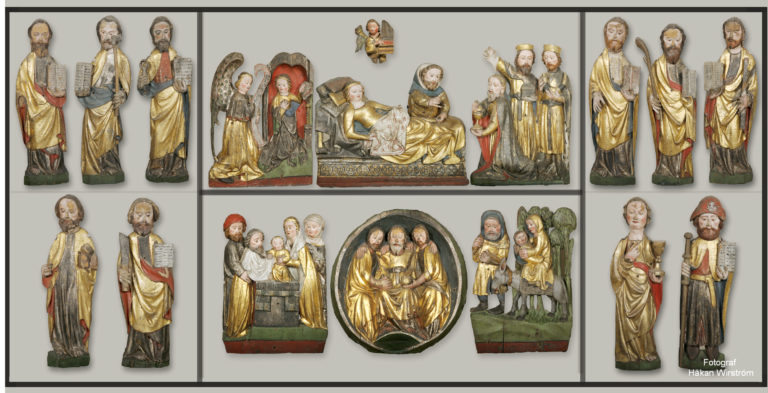
The wooden sculptures, which today are placed in the wall niches of the old nuns’ chancel, were previously included in an altar cabinet from the mid-15th century. However, that cabinet was not in the church at the time it served as an abbey, it probably came to Askeby in 1732.
Decoration of the Congregational Church
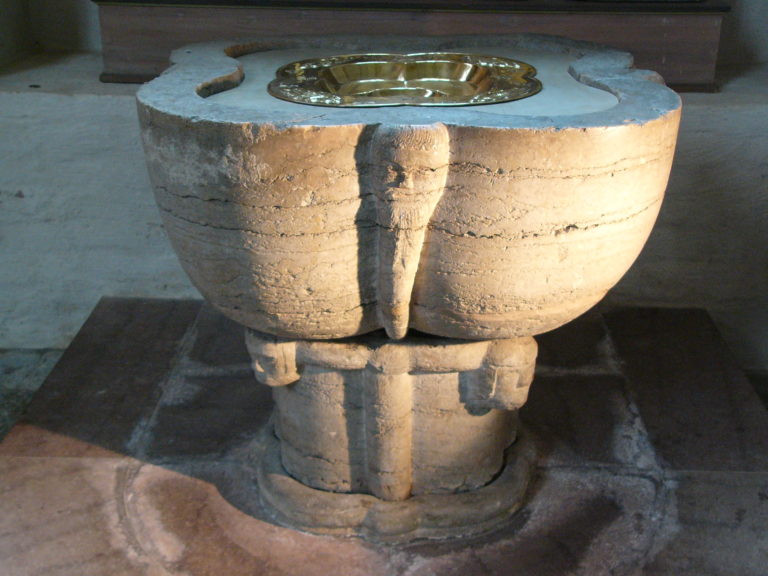
The baptismal font still remains among the inventories of the medieval Congregational Church, although not in its original placement.
SG
